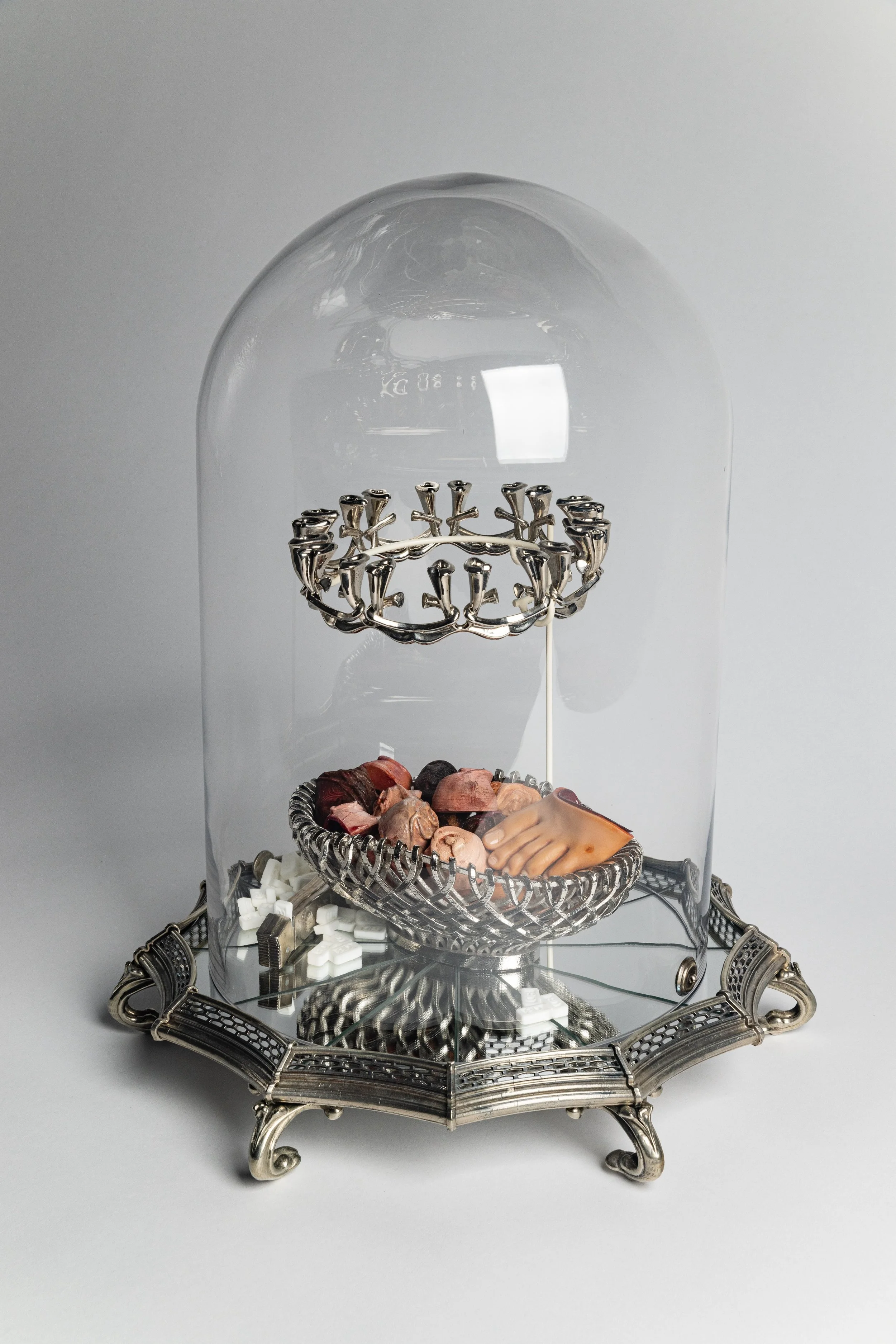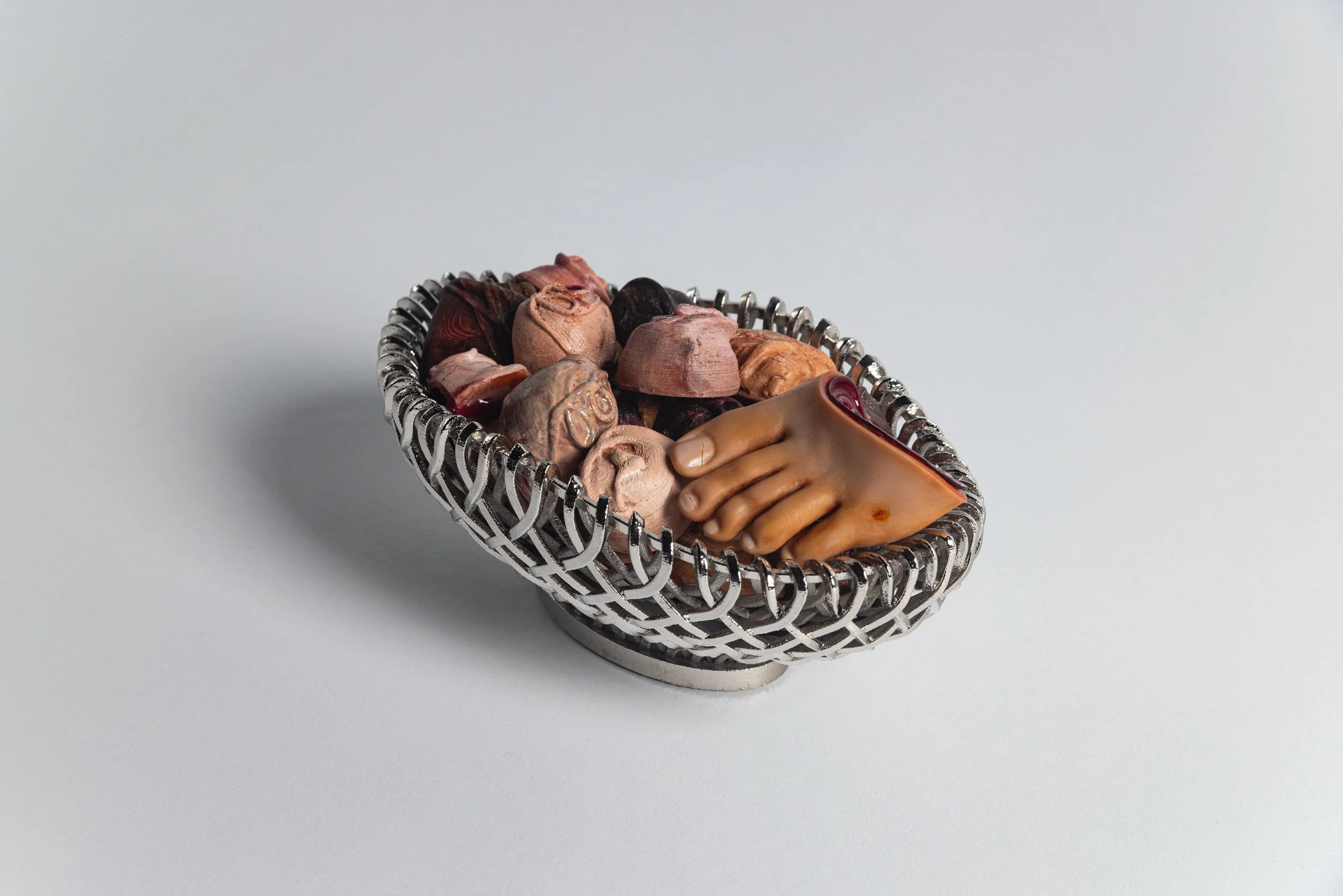PARLOR DOME
Popular in the Victorian era, parlor domes were glass coverings used to protect and display decorative items, such as sculptures, taxidermy, and botanical specimens, highlighting the owner’s taste and interests.
My first inspiration was a trompe-l’oeil fruit plate created by Meissen, the European manufactory founded in 1710 and renowned for its high-quality ceramics and artistic innovation. The control of porcelain in Philadelphia during the 1700s was closely tied to colonial trade and the desire of the American elite to emulate European sophistication, with access to fine porcelain being a symbol of status and wealth.
The second reference was a round plateau tray from a friend’s antiques collection, an ornate sterling silver frame with a mirrored top; its use was as a base for presenting elaborate dishes or decorative arrangements.
Inside the parlor dome I displayed a grouping of autobiographical objects, collected between 2000 to 2021. An electroplated crown symbolized personal triumphs and milestones in my life, with the electroplating suggesting themes of transformation and preservation. Early versions of flesh-like chocolates cradled in an electroplated 3D-printed basket combined organic and technological elements to reflect my exploration of identity in the age of digital and biotechnological advancements.
A sterling silver Pez candy dispenser, like those given as favors to my wedding party, represented joy, celebration, and shared experience. The choice of sterling silver elevated this mundane object to a precious keepsake, highlighting its sentimental value. Additionally, a brooch titled Transmet, depicting a surgical procedure related to diabetic foot amputations, introduced themes of medical intervention, bodily vulnerability, and resilience, symbolizing my confrontation with illness and the physical and emotional scars that accompany such experiences.





